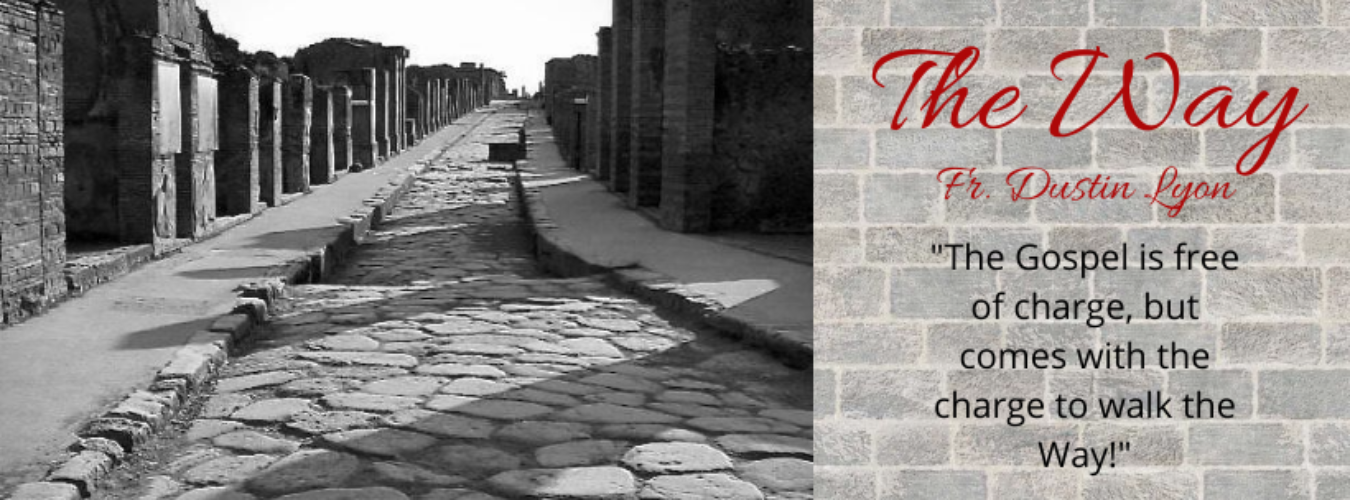Sermon for the Sunday of St. Thomas (John 20:19-31)
Oops!
“Unless I see the mark of the nails in his hands, and put my finger in the mark of the nails and my hand in his side, I will not believe.”
Thomas’s words ring out with raw honesty. While the other disciples rejoiced at seeing the risen Lord, Thomas wasn’t there. He missed it. And now he demands evidence—physical, tangible proof. Not stories. Not secondhand testimonies. He wants to touch the wounds himself.
We often cast Thomas as the doubter, the skeptic, the one who lacked faith. But I wonder if Thomas’s demand reveals something deeper about our human condition. Don’t we all, in moments of pain and uncertainty, cry out for tangible evidence of God’s presence? Don’t we all sometimes need to see and touch to believe?
Ugh!
The resurrected Christ appears differently than we might expect. In our minds, resurrection should mean perfection—wounds healed, scars erased, all evidence of suffering gone. A brand new, unblemished body.
But that’s not what Jesus shows Thomas. He doesn’t present himself as pristine and unmarked. Instead, he invites Thomas:
“Put your finger here and see my hands. Reach out your hand and put it in my side.”
The wounds remain. The scars are still there. Nicole Roccas, a popular Orthodox author, recently wrote a blog post [link] about suffering and the resurrection. She writes,
“The Resurrection does not erase suffering. Instead, it carries it forward, wrapping it in life and light and transforming it with the fullness of meaning.”
This discrepancy between our expectations of resurrection and the reality of Christ’s scarred body invites us to reconsider what healing truly means.
Aha!
The clue to understanding this mystery lies in those very wounds. Christ’s scars are not imperfections in his resurrected body—they are essential to it. They are proof not just of his suffering but of his identity.
Roccas notes this profound truth:
“The shape and location of Christ’s wounds were what allowed some of His followers to even recognize Him, let alone have faith in His true Resurrection.”
Thomas recognizes Jesus through his wounds. Without them, would he have known it was truly his Lord? These marks of suffering become marks of identification—proof not that Jesus never died, but that the one who died is the same one who now lives.
Whee!
When Thomas finally encounters the risen Christ, his response is immediate and profound: “My Lord and my God!” In touching Christ’s wounds, Thomas doesn’t just acknowledge Jesus’s resurrection—he proclaims his divinity.
The Gospel’s power lies in this transformative moment: Christ meets Thomas exactly where he is—in his doubt, in his need for tangible proof—and transforms that moment into one of profound revelation.
As theologian Shelly Rambo, quoted by Roccas, reminds us:
“Resurrecting is not so much about life overcoming death as it is about life resurrecting amid the ongoingness of death. The return of Jesus marks a distinct territory for thinking about life as marked by wounds and yet recreated through them.”
This is the miracle of resurrection we celebrate—not that suffering disappears, but that it becomes the very place where we encounter God most profoundly.
Yeah!
What does this mean for us, who carry our own wounds? Our own traumas and scars—some visible, others hidden deep within?
It means that our healing may not look like erasure. As Roccas writes,
“Sometimes, it means the build up of scar tissue. Sometimes it means the wound remains tender; covered, but never fully forgotten.”
But it also means something more profound:
“Whatever reason for our scars… they bear the potential to become witnesses—not just to what we’ve survived, but to how God has mystically shown up in the midst of it.”
Our wounds, like Christ’s, can become places of testimony—evidence not just of what we’ve endured but of how God has met us there.
Jesus tells Thomas, “Blessed are those who have not seen and yet have come to believe.” This includes us. We haven’t placed our fingers in Christ’s wounds. But perhaps we’ve felt his fingers in ours—his presence in our suffering, his light in our darkness.
This Sunday of St. Thomas invites us to a deeper faith—one that doesn’t deny wounds but recognizes them as sacred spaces where resurrection becomes real. We are invited to touch Christ’s wounds and allow him to touch ours, transforming them from places of pain into places of testimony.
May we, like Thomas, encounter the risen Lord in unexpected places—even in our wounds—and proclaim with all our hearts: “My Lord and my God!”
Amen.

